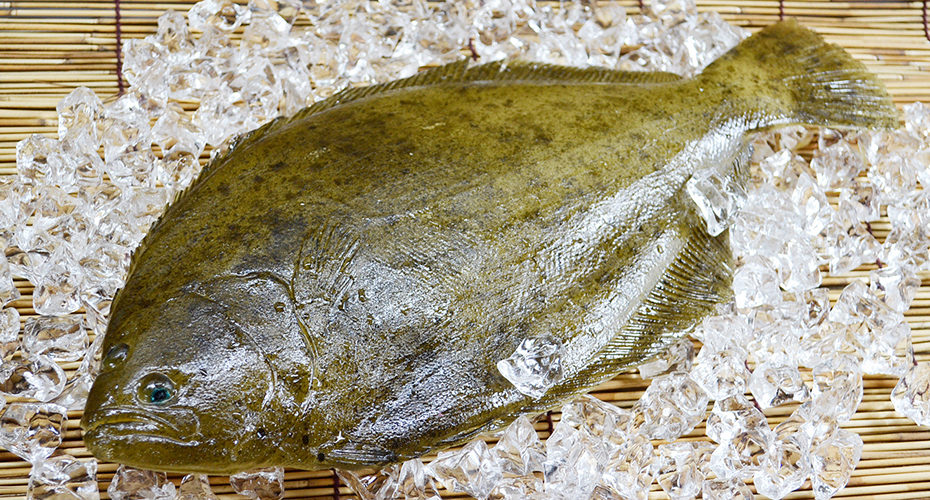Hirame sushi is a classic. It’s not as popular as tuna, salmon, or yellowtail in the West. But it should be.
This post breaks down this odd fish in easy-to-digest parts. You’ll learn about the species, its prime season, what it tastes like, how to prep it, and what to drink with it.
What is Hirame?
Hirame (平目) is a flatfish, and the term usually refers to fluke or olive flounder. It’s considered a type of shiromi (white-fleshed fish). These types of fish usually have a mild flavor and a firm, springy texture. And this is definitely true of hirame.
Raw hirame sushi and sashimi are the two most popular presentations. It’s sometimes fried, steamed, or simmered, as well.
What Does Hirame Sushi Taste Like?
Raw hirame sushi and sashimi has a firm texture. It’s usually sliced thin to make it easier to chew. The flavor of fluke is very mild and slightly sweet. It also has a faint briny flavor like seawater.
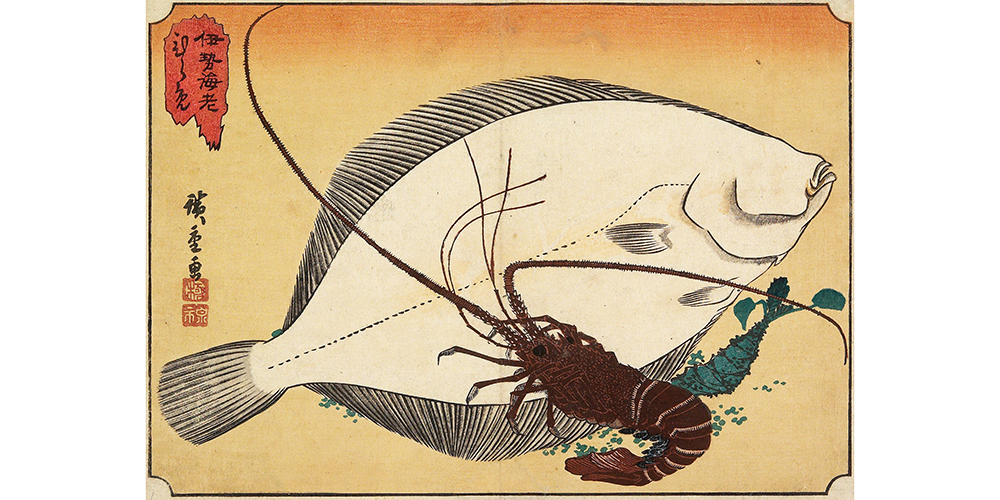
Olive Flounder – Fluke
Hirame is a left-eyed, Pacific species of flounder. It’s usually olive flounder, Paralichthys olivaceus, but other species are sometimes substituted.
Olive flounder is considered to be at its best during the winter. During the colder months, it’s both fattier and more readily available. The flesh of hirame harvested during the summer can be mushy.
Other Flatfish
In the US, a lot of hirame found in sushi restaurants is Atlantic summer flounder. This fish is often raised in open-ocean net pens. Instead of having a white belly, farmed summer flounder is brown underneath.
There are several other types of flatfish that are popular as sushi in Japan. The two most prized are makogarei and hoshigarei. The latter is often considered the best. Both of these fish are right-eyed flounders.
There’s an old saying in Japan that helps to distinguish hirame from these other fish: “Hidari Hirame, Migi Karei.” This translates to left hirame, right halibut. This saying works in Japan, but not very well in North America.
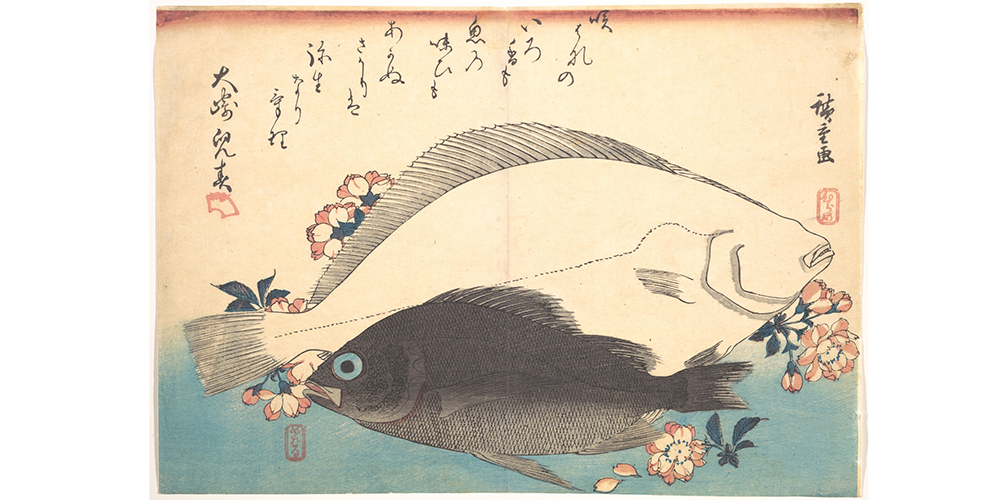
Popular Dishes Made With Fluke
As mentioned above, hirame sushi and sashimi are the most popular preparations. However, it’s sometimes fried, steamed, or simmered too.
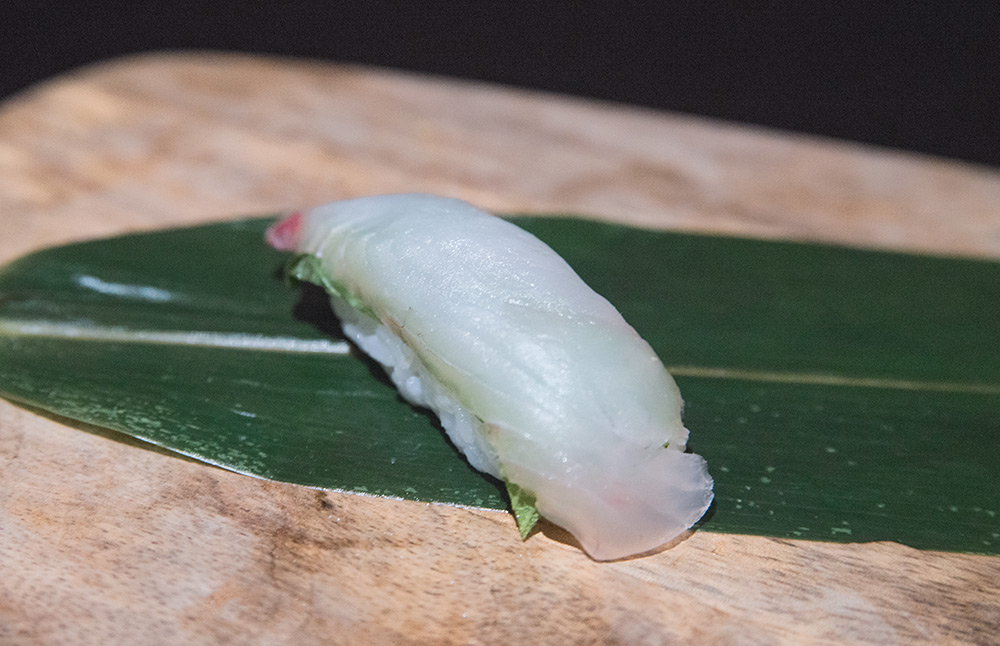
Hirame Sushi
Fluke sushi basically implies nigiri. This is how you will find it served almost every time. But sometimes it’s placed inside or on top of rolls.
Hirame Nigiri
Nigiri is the king of fluke sushi. It’s thinly sliced to account for its firm texture. The flavor of sushi rice complements the mild sweetness and briny flavor of the fluke. And hirame’s springy texture is a nice contrast to the softness of the rice.
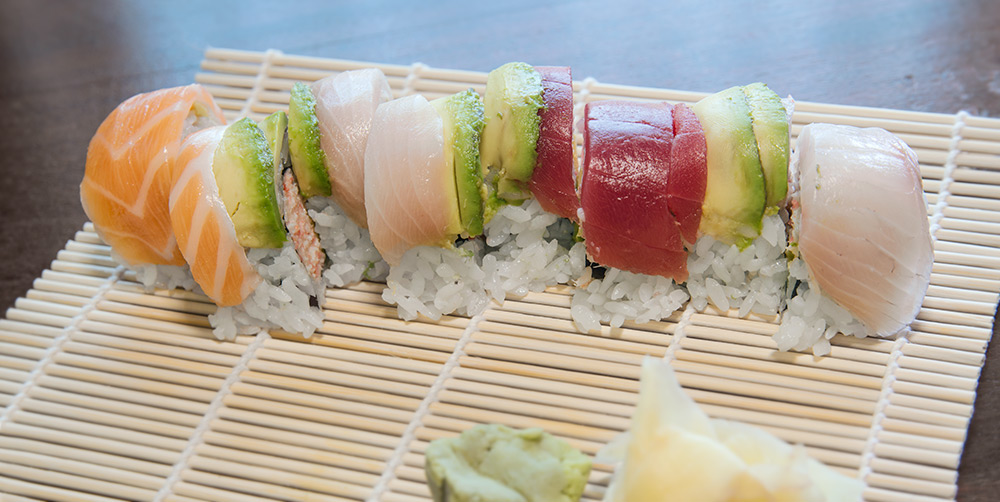
Rainbow Roll
The rainbow roll is a super popular Western-style sushi roll. Inside is a California roll, and tuna, salmon, ebi, avocado, and/or white-fleshed fish are laid over the top.
When a white-fleshed fish (shiromi) is used on top, it’s often hirame.
Fluke Sashimi
Thinly sliced hirame sashimi is one of my favorite dishes. When prepared properly, it’s almost translucent.
There’s no rice with fluke sashimi, which highlights the springy texture and delicate flavor of the fish.
Thick slabs of hirame can be offputting. So keep an eye on the chef and his sashimi cuts if you’re unsure.
Engawa
Engawa is the fin muscle of the flounder. It has a meaty, crunchy texture. It’s popular to serve engawa as nigiri sushi.
Sometimes engawa (えんがわ) is flame-seared to tenderize the meat. Other times, it’s scored, and for the same reason.
Recommended Sushi Making Tools & Plates
As an Amazon Associate I earn commissions from qualifying purchases.
Recommended Japanese Kitchen Knives
As an Amazon Associate I earn commissions from qualifying purchases.
How to Make Hirame Sushi at Home
Fluke can be prepared at home with a little effort. Check out this useful video from Native Sushi. He demonstrates how to break down the fish and make hirame sushi and sashimi.
Aging Flatfish
Larger (or softer) hirame and halibut often benefit from some aging. This is often done using the kobujime method.
Kobujime involves wrapping the flatfish in kelp for a short period of time. This adds a bit of umami and shelf-life.
Check out this helpful video from 関斉寛 (Seki Narihiro). He explains and demonstrates the kobujime process in Japanese with English subtitles.
Beverage Pairings With Hirame Sushi
Raw shiromi, including hirame, are best when paired with delicate and dry beverages. Strong or rich-flavored drinks will easily overpower this delicate fish.
My top pairing recommendation for hirame sashimi and nigiri is dry and light (karakuchi tanrei) sake. Fruity higher-grades like ginjo, junmai daiginjo, and daiginjo work really well.
Check out my Sake Grades and Styles post if you want to learn more about the different types of sake.
Pairing Wine and Beer With Hirame
The same rules that apply for sake apply to wine and beer.
For wine, delicate and mineral-driven profiles are best for pairing with raw fluke. Muscadet, Savoie, pinot blanc, pinot grigio, Sancerre, and Chablis are usually great matches.
Sometimes hirame nigiri will include a slice of shiso. In this case, Sancerre and other Old World sauvignon blancs are especially good pairings.
For beer, look for clean and mellow brands. The Japanese macrobrews are an obvious place to start. Sapporo Premium and Asahi Super Dry are widely available, and they won’t clash with anything.
I LOVE Echigo Koshihikari. It has less carbonation and a bit more umami. It’s a perfect complement to raw or fried hirame. Otherwise, German and Czech lagers will definitely get it done.
31 Days of Sushi
If you find this post useful or enjoyable, I suggest you check out some of the other content in my 31 Days of Sushi campaign.
Every day in August I’ll share a new piece of content. Topics are centered around nigiri and maki sushi. I include sashimi info, as well.
It’s like an omakase of sushi information!
What Do You Think About Hirame Sushi?
Do you prefer it as nigiri or sashimi?
Also, do you have a favorite restaurant that serves hirame?
Please share your thoughts by commenting below!
